Known for its incredible nose, the bloodhound is a tracking dog through and through. From its droopy ears (the better for picking up scent), to its somewhat independent ways, this dog is perfect for trailing scents in many different environments. Read on to learn about the bloodhound.
Description of the Bloodhound
Bloodhounds are the largest of the hound group of dogs. They are highly social dogs that were originally bred for hunting deer and boar in Europe. Now their famous noses make this breed a top pick for police forces and search and rescue teams – or any other professionals who need a helping nose to find someone.
The name bloodhound comes from the term “blooded hound,” which originated over a thousand years ago to denote the high breeding status of the bishop’s personal hounds. From comically drooping ears, to a deep chest, the bloodhound is an eye-catching dog. These dogs generally come in color variations of tan, or tan with black markings.
While these dogs are quite social, they are relentless when they are on the job. Bloodhounds will trail a scent day and night, until they find what they’re searching for. Off duty, these dogs enjoy cuddling and socializing with people and other dogs.
These dogs do well with owners who understand their drive to sniff, and will let these dogs work with their noses.
Life Expectancy and Size
The bloodhound generally lives about 10 to 12 years, a bit on the short end for dog breeds. This lifespan is not unusual for dogs of this size – the males weigh up to 110 pounds. Like most large dogs, the bloodhound simply doesn’t live as long as the smaller breeds.
Protective Ability
Despite a booming “bay” for a bark, these large hounds are not known for protective ability. While these dogs are large, they tend to be quite lazy and easygoing when they’re not tracking. Their size alone might do the trick, but don’t count on a bloodhound to guard your home.
Training
The bloodhound is bred for one thing, really: tracking things with its nose. These dogs can be frustratingly single-minded during training, and easily distracted from training by passing odors. While they tend to enjoy treat-based training, it can be very difficult to teach most hound dogs off-leash obedience, or polite leash-walking manners.
That said, the bloodhound stands apart from other breeds if you are interested in tracking or nose work sports. What makes them a challenge to train for basic obedience or tricks is exactly what makes them excel in scent sports: their nose.
Early training and socialization are important for this breed, to keep them from becoming set in their ways. They respond well to gentle, reward-based methods to keep their focus and motivation high.
Energy Level
Most bloodhounds are happy to spend their days lounging, though they absolutely need regular outdoor exercise. They should not be left to sleep the days away – their large frames will stay healthy for longer with regular walks. While they might not demand exercise the way some dogs will, a good bloodhound will almost always enjoy the chance to use his nose to explore the world on a walk.
Care of the Bloodhound
With huge droopy ears, and bothersome (but cute) wrinkles, the bloodhound needs some extra care to live into his early teens.
Environmental Needs
These dogs generally do well in a variety of climates, though their long ears are susceptible to frostbite in extreme cold. They do relatively well in the heat, if they are provided plenty of cool water and shade.
Exercise Needs
The bloodhound needs regular activity, generally to include leashed walks and some scent games. In fact, a wonderful way to entice your bloodhound to get out and exercise is to play scent games on their walks. This breed doesn’t tend to do well off leash, since they easily get carried away by their noses!
Shedding and Grooming
While the bloodhound’s short coat doesn’t require much care, it does shed a fair bit. It’s also important to note that those characteristic wrinkles and droopy ears should be checked daily, and they should be cleaned regularly with a warm wet cloth and allowed to dry completely. Otherwise, it’s easy for bacterial or fungal infections to take hold.
Ideal Home Environment
The bloodhound isn’t generally a good dog for first-time owners. Their drive to sniff, and their booming bark aren’t well-suited for impatient owners. However, for owners interested in scent work, tracking sports, search and rescue, or other ways to use a dog’s nose, the bloodhound is unparalleled.
They are still found being used for hunting in some areas, though other coonhounds are generally more popular nowadays. Thanks to their baying bark, bloodhounds are ill-suited to apartment living. They’re generally gentle and social, doing well in relatively busy households.
Health Concerns
As with almost all large breeds, the bloodhound can suffer from bloat. Get to know the signs and symptoms of bloat to help save your dog from this life-threatening condition.
Bloodhounds are also notorious for eating non-food items, which can lead to dangerous (and expensive) surgeries. In addition, these dogs should always be screened for hip, elbow, and cardiac issues. Ask to see the test results for the parents of any puppy before bringing it home.
Behavior Problems
Generally mild-mannered, the bloodhound will still frustrate some owners with constant sniffing, selective hearing, eating of non-food items, and loud baying. Some bloodhounds will also become easily over-excited about life, leading to painful jumping and even nipping.
Your best chance of avoiding these issues lies in picking a good puppy from a reputable breeder, and starting reward-based training and socialization early.
How to Get One
It’s generally not easy to find a bloodhound in shelters or rescues, though they may turn up in breed-specific rescues. They also seem to be more common in the southern U.S. Like all breeds, you should avoid purchasing puppies online or in pet stores, where there is a higher likelihood they come from a puppy mill.
As always, it’s important to find a breeder who takes care of their dogs’ health and not just profit! Don’t take home a puppy without first meeting the parents, and seeing where it was raised.

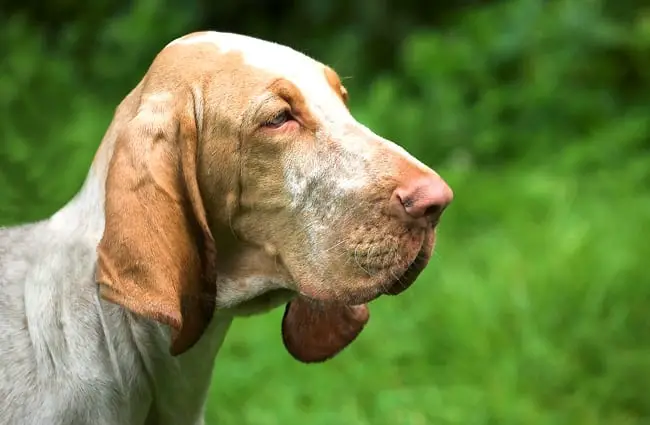


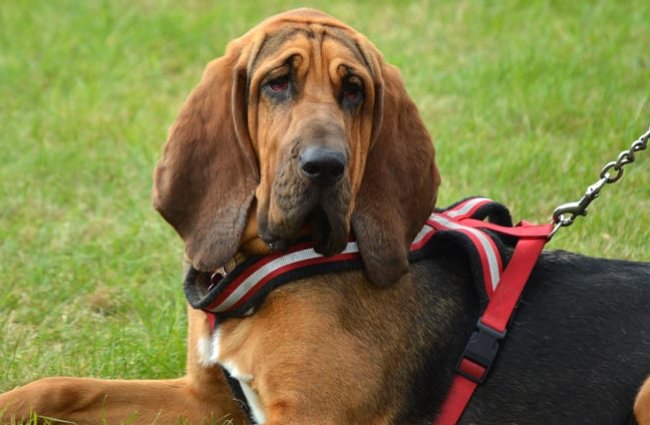

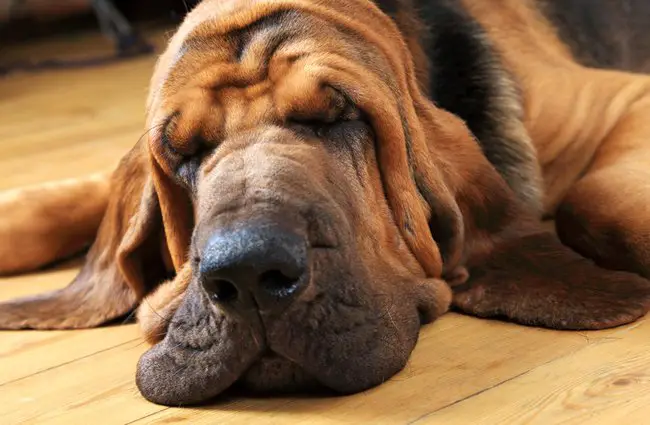
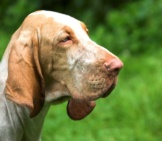
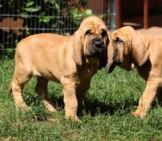

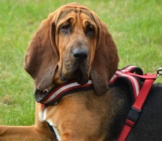
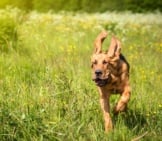
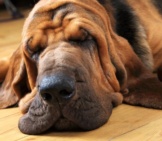













![Red Angus Closeup of a beautiful Red Angus cowPhoto by: U.S. Department of Agriculture [pubic domain]https://creativecommons.org/licenses/by/2.0/](https://animals.net/wp-content/uploads/2020/03/Red-Angus-4-100x75.jpg)

